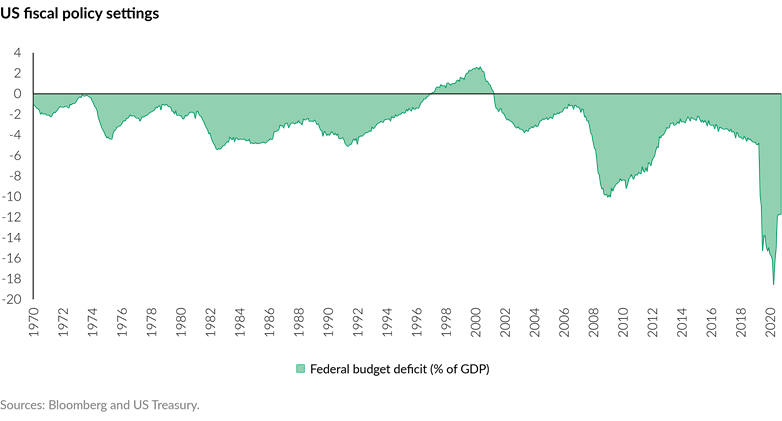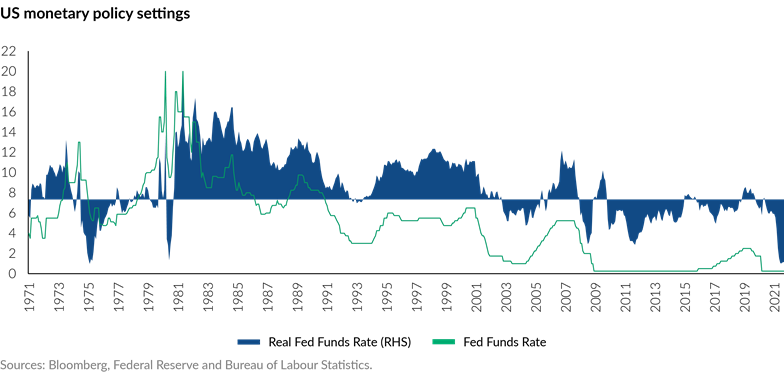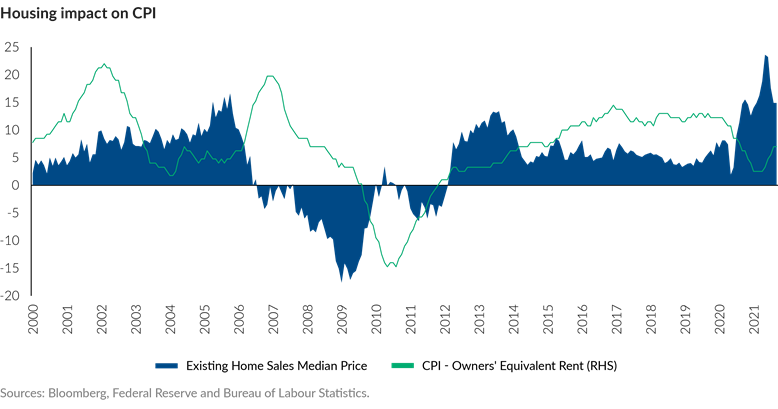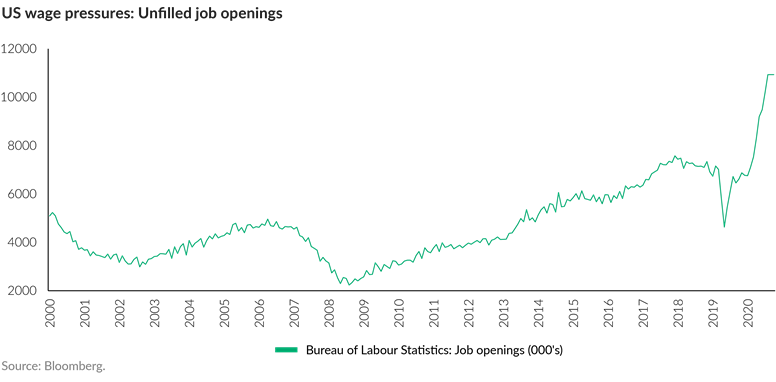Fraudulent Telegram and WhatsApp groups
Please beware of fraudulent Telegram and WhatsApp groups impersonating PSG Financial Services, our divisions and our advisers. Be cautious, verify links and contact your adviser or Client Services if you have any queries or concerns.
05
November 2021
Thriving in a major market inflection depends on duration and mandate - Angles & Perspectives

Kevin Cousins, Head of Research
PSG Asset Management
Why is the bifurcation between long duration and short duration assets important now? Long duration assets have earned their high weightings in benchmarks and dominant positions in investor portfolios through many years of delivering good returns. However, after 40 years of declining interest rates and inflation, the world appears to be at a long-term inflection point. Anchoring on what has worked historically through big market inflection points, is immensely risky for investors. The ratings of long duration assets, as highlighted below, imply a continuation of the current cycle for many years into the future. Should that outlook be incorrect, very substantial capital losses may ensue.

“ Future outcomes for investors will not only depend on the manager’s view, but critically also be very dependent on mandate structure and how your investment manager defines risk. ”
Thriving in a major market inflection depends on duration and mandate
Watch out for the inflection point
Why is the bifurcation between long duration and short duration assets important now? Long duration assets have earned their high weightings in benchmarks and dominant positions in investor portfolios through many years of delivering good returns. However, after 40 years of declining interest rates and inflation, the world appears to be at a long-term inflection point. Anchoring on what has worked historically through big market inflection points, is immensely risky for investors. The ratings of long duration assets, as highlighted below, imply a continuation of the current cycle for many years into the future. Should that outlook be incorrect, very substantial capital losses may ensue.
What are ‘long duration’ and ‘short duration’ assets?
A ‘long duration’ asset is a highly rated asset with a low yield, and it takes many years to earn back your capital. For example, the 10-year US Treasury’s current yield (just under 1.5%) implies it will take some 67 years to get your money back. US high-yield bonds, with a 4% yield, imply 25 years and the S&P 500 Index, with an earnings yield of 3.8%, implies a period of 26 years. If we consider dividends, the S&P 500’s current 1.4% yield implies a payback period of more than 70 years. Within equities, US technology, some consumer and other growth stocks are richly valued, huge in the index and the epitome of the long duration asset. This rough measurement of duration is distinct from a bond’s term or maturity.
Ironically, long-dated SA government bonds currently trade at rich double-digit yields and must be considered ‘low duration’ assets, returning a substantial portion of your investment in the first few years of ownership. While this framework is just a rule of thumb, each of these long duration asset classes (US treasuries, US high-yield credit and US equities) is valued at historic extremes when compared to long-term ratings.
In contrast, ‘short duration’ assets would include equity sectors on low price-earnings ratios (PEs), and with substantial returns of capital to investors anticipated over the next few years. These sectors are typically characterised as value stocks and globally include energy, mining/resources and financials. Many emerging market equities would also fall into the low duration category.
There is increasing evidence that the interest rate and inflation cycles are turning
Developed market fiscal and monetary policy has shown dramatic changes over the past 18 months, particularly in the US. The Covid-19 crisis showed governments that they could run much wider budget deficits than historically considered prudent, with intellectual cover for this coming from the increasing credibility ascribed to Modern Monetary Theory (MMT), which claims governments face few limits to borrowing in their own fiat currency. The 2020 and forecast 2021 deficits in the US have been the widest since the Second World War over 75 years ago.

While the deficit is set to narrow over the next few years, the broader point is that resorting to massive increases in spending, at levels previously only seen in wartime, is now considered acceptable policy. Expect this to happen more.
Real policy rates hark back to the 1970s
In August 2020, the US Federal Reserve (the Fed) announced that it had changed its strategy to achieve its goals under its Congressional mandate. Firstly, the inflation target changed to “average 2% over time” meaning following periods of below target inflation, inflation could be allowed to run “moderately above 2% for some time”. Secondly, they now target a “broad-based and inclusive goal” for maximum employment, with no specific targets disclosed. In addition, their comments have indicated they will no longer be pre-emptive when determining policy, “they will actually have to see it in the data”. Employment is already a lagging economic indicator.
Together, these changes raise the probability of the Fed being severely behind the curve when faced with persistent inflation. The chart shows the federal funds rate over the past 50 years. The current policy settings are the most accommodative ever, and appear entirely inconsistent with inflation, as evidenced by the real fed funds rate (directionally shaded) being less than -5%, last seen in 1975.

Not so transient
The response to the sharp move higher in US inflation by policymakers (and most market participants) was that the increase could be explained by the ‘base effects’ of the Covid pandemic. As of August, the base month for year-on-year CPI (August 2020) exceeded the highest pre-Covid reading, so base effects can no longer be blamed. The narrative has now turned to ‘transient’ effects resulting from supply chain disruptions. While this may be partially true, three major factors are likely to ensure US inflation remains significantly above target in the medium term:
Firstly, US shelter costs make up more than 30% of CPI and 40% of core CPI. Despite house prices appreciating faster in 2021 than the 2005 peak of the housing bubble (directionally shaded area in the chart, currently +15% YoY), and reported rent increases up 16% year to date, the housing portion of CPI is still muted, with rent of primary residences +2.1% YoY in August and Owners’ Equivalent Rent +2.5% (green line in the chart)

Secondly, wages are growing rapidly with business owners battling to fill positions, a high ‘quit ratio’ and a record number of job openings (some 11 million, as shown below). Wage inflation can be regarded as different to other price pressures, as it has a positive feedback loop, higher wages = higher spending = higher prices = demands for still higher wages.

Thirdly, and importantly for our low duration equities, many of the commodity price increases, while triggered by Covid-19 supply chain pressures, are also evidence of substantial supply-side under-investment that cannot be remedied easily or quickly.
A collapse in investment in the mining and energy sectors since 2015 was initially driven by shareholders requiring (and incentivising) management teams to curtail growth capex and prioritise deleveraging, dividends and share repurchases. This has now been exacerbated by market participants characterising ‘ESG’ (environmental, social and governance considerations) as primarily about avoiding sectors responsible for carbon emissions, including fossil fuel energy and other basic materials. Many asset managers, banks and sovereign wealth managers are now restricting investment in new projects and divesting existing holdings. This interpretation of ESG risks is preventing the normal market feedback loop where higher prices incentivise new investment and increase future supply. While the normal vagaries of demand will remain cyclical, the supply side squeeze from the under-investment is likely to cause an extended period of significantly higher, if still volatile, prices.
The US economy is likely to be characterised by sustained higher inflation, and similar pressures exist for other developed markets. This macro environment is very dangerous for holders of long duration assets, given their extreme sensitivity to changes in future interest rates. However, it has a high probability of favouring low duration assets, with cheap ratings and strong near-term cash flows, much of which will be returned to owners.
A view is not enough: pick your mandates carefully in a major market inflection point
When long-established trends inflect, such as the 40-year decline in inflation and interest rates in the US, very dramatic price moves and performance rotations are likely. This is because a historic perspective of what works and what is risky is deeply ingrained in investor positioning. This has the potential to be a classic ‘make or break’ moment in markets. Future outcomes for investors will not only depend on the manager’s view, but critically also be very dependent on mandate structure and how your investment manager defines risk.
In this environment investors are likely to be very poorly served by:
- Benchmark cognisant managers who will maintain large positions in overpriced long duration assets, even if they have correctly identified the poor prospects for the assets, due to their current size in the benchmark index.
- Managers that define risk using historical standard deviation of returns or tracking error. Ironically, many attractive ‘low duration’ assets have historically displayed volatile prices, particularly in comparison with ‘long duration’ assets. Their low-risk properties or fitness for the new macro environment is in effect ‘hidden’ from processes quantitatively defining risk in this manner.
- Managers with a 'copy and paste' ESG approach, one that is exclusionary and does not give appropriate weight to massive societal issues such as energy poverty, and is likely to avoid many low duration sectors.
Long duration assets risk a substantial derating given higher prevailing inflation
Short duration assets are well placed to deliver excellent near-term cash flows in this macro environment, and will further benefit from an ongoing rotation out of very overheld long duration assets. Benchmark agnostic managers with practical rather than quantitative risk measures and a comprehensive rather than an exclusionary approach to ESG, are likely to be a counter-intuitive safe haven through the turmoil typical of major trend inflections.
Recommended news

Welcome to the latest edition of the Angles & Perspectives
The investment landscape has changed dramatically since the beginning of the Covid-19 pandemic. We believe markets have reached an inflection point, with deep consequences for how we construct portfolios going forward. In this edition, our panel of experts debate a range of issues centred around this topic. Long and short duration assets can be expected to yield very different outcomes than over the past 40 years, which will be problematic for investors and portfolio constructors who cling to what has worked in the past. This challenge is likely to be especially pronounced for fixed income investors, who will need to reconsider their investment toolkit to ensure they are well positioned to continue meeting their objectives.
Read more
Introduction - Angles & Perspectives Q3 2021
We have been writing about the phenomenon of built-in extremes within the same system – in this case the market – for some time. The discerning investor seldom sees the market as one entity and realises that from time to time, bifurcations may occur. This fragmentation into quite distinct parts can occur slowly at first, initially creeping into the system almost unnoticed, but eventually manifesting itself in stark and undeniable ways. This offers both risk and tremendous opportunity.
Read more
Major market inflection points: Thinking about portfolios for the next decade - Angles & Perspectives
Conditions have changed substantially over the past 18 months, and we believe the weight of the evidence suggests that the market has probably reached an inflection point. In our view, the probability has shifted towards a more reflationary global backdrop, which the market is not yet pricing in. This is likely to have wide implications when considering asset classes that performed well over the last decade, and those that can be expected to deliver real returns at appropriate levels of risk over the next decade. Accordingly, fixed income investors need to review their strategy and explore the benefits of multi-asset income funds for generating real returns at low levels of risk.
Read more
Multi-asset fixed income funds: Risk management when the rules are the same, but the game has changed - Angles & Perspectives
2021 is showing signs that four decades of declining global interest rates and inflation are coming to an end. A major cycle inflection changes the game for fixed income investors. It will become more and more difficult to earn inflation-beating returns while sticking to the rules of the game, being low levels of risk. In this case, the obvious question fixed income investors should be asking themselves is whether their strategy and toolkit are appropriate for a future that will look very different from the past.
Read more
The Edge, 3 Howick Close
Tyger Waterfront
Bellville
7530
Stay Informed
Sign up for our newsletters and receive information on finance.







